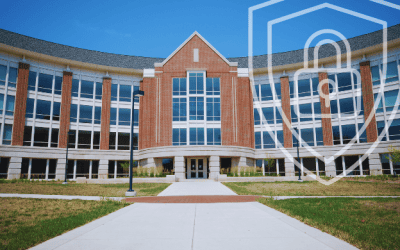Imagine uncovering a critical vulnerability only after your software has gone live. Now think about how much more expensive it will be to fix it. That is not an exaggeration. According to IBM and NIST aligned research, fixing a bug found in implementation can cost 4 to 6 times more than discovering it during design, and if it slips into production, remediation costs can spike to up to 100 times more.
But cost is just the beginning. A bug in production, especially one exploited by attackers, can damage trust, trigger compliance fines, and spur customer churn, not to mention the logistical chaos of hotfixes and rollback sprints.
This is why building security into the SDLC from the very start is no longer optional. It is not about tacking security checks onto the end of development. Instead, it is about weaving them in early and continuously: threat modeling during design, secure coding during development, automated scanning in CI/CD pipelines, and proactive monitoring in production.
In the sections ahead, we walk through each SDLC phase from planning to maintenance, highlighting best practices and frequently overlooked tactics like SBOMs and security champions. You will see how a holistic, structured approach to secure development does not slow you down. It builds reliability, efficiency, and long term trust.
Why Security in the SDLC is Often Overlooked
Despite overwhelming evidence that early security integration saves time and money, many development teams still treat it as an afterthought. This disconnect often stems from a mix of misconceptions, competing priorities, and the relentless pressure to deliver features faster.
One common misconception is that security only needs to be addressed during testing, just before deployment. In reality, vulnerabilities introduced in the planning, design, or development phases are far easier to prevent than to fix later. Waiting until the end to run security checks can lead to late-stage rework, delayed releases, and expensive code rewrites.
Time pressure is another major factor. In today’s fast-paced release cycles, especially in DevOps environments, development teams often feel the need to prioritize speed over security. Cutting corners might help hit a release date, but it leaves the door open for costly vulnerabilities to slip into production.
There is also a tendency for security to be viewed as “someone else’s responsibility.” Developers may focus on functionality and performance, assuming the security team will handle the rest. This siloed mindset not only slows response times but also increases the risk of blind spots, particularly in areas like API security and third-party dependencies.
Cultural factors also play a significant role. Without a security-first mindset embedded across all roles in the SDLC, even well-designed processes and tools can be bypassed or ignored. In these environments, security becomes reactive instead of proactive, relying more on luck than strategy to prevent serious incidents.
Best Practices by SLDC Phase
Understanding where security tends to fall through the cracks is only half the battle. The real value comes from knowing how and where to build protection into every stage of the software development lifecycle. When security becomes a continuous, embedded part of the process, rather than an isolated step near the end, it transforms from a bottleneck into an enabler.
Let’s take a closer look at how organizations can apply secure practices across each phase of the SDLC:
- Planning & Requirements: Security starts before a single line of code is written. During the planning phase, it’s essential to define security requirements alongside product features and user stories.
- Incorporate compliance mandates and data protection obligations (such as GDPR, HIPAA, or industry-specific standards) into technical planning documents.
- Conduct a risk assessment to identify assets, potential threat actors, and business impact.
- Involve security stakeholders early to align technical strategy with protection goals.
- By integrating security into planning discussions, organizations reduce the chance of late-stage surprises and make it easier to build secure systems by design.
- Design: The architecture of an application can either harden it against threats, or leave it wide open. This phase is where proactive thinking can have the most impact.
- Perform threat modeling to map out how a system might be attacked and where controls should be placed.
- Embrace secure design principles like least privilege, separation of duties, and defense in depth.
- Review third-party services and APIs being integrated, and evaluate their security posture before design decisions are finalized.
- A well-designed system should reduce attack surface before code is even committed.
- Development: Security is often compromised here in the name of speed, but it doesn’t have to be. Developers can write secure code without sacrificing velocity if the right support is in place.
- Follow secure coding standards, such as those outlined by OWASP or your organization’s internal guidelines.
- Ensure secrets, credentials, and keys are stored securely and never hardcoded.
- Provide ongoing training and upskilling so developers stay current on secure practices.
- Use linting and static code analysis tools that flag vulnerabilities as part of the development workflow.
- Security-conscious development is most effective when it’s built into daily habits, not treated as an afterthought.
- Testing: Testing is the final opportunity to catch vulnerabilities before they reach production, but it should never be the first time they’re checked for.
- Incorporate Static Application Security Testing (SAST) and Dynamic Application Security Testing (DAST) into automated pipelines.
- Leverage Interactive Application Security Testing (IAST) for deeper insight into runtime behavior.
- Run dependency scans to identify known vulnerabilities in third-party libraries.
- Use security-focused test cases to validate controls like input validation, authentication, and authorization.
- Comprehensive testing strengthens the confidence that your application is resilient and production-ready.
- Deployment: Even a perfectly coded application can be compromised by insecure deployment practices.
- Lock down CI/CD pipelines with strong access controls and secure credential storage.
- Scan Infrastructure as Code (IaC) templates before provisioning to detect misconfigurations.
- Use automated validation checks to ensure environments are hardened and configured consistently.
- Implement logging, monitoring, and alerting as part of the deployment process, not after.
- A secure deployment process helps prevent configuration drift and reduces the likelihood of exposed services.
- Maintenance & Continuous Improvement Security doesn’t end once an application is live. It must evolve alongside the product and its environment.
- Continuously monitor systems for threats and anomalies.
- Patch vulnerabilities in code and dependencies on a regular cadence, not just during major releases.
- Conduct post-incident reviews to improve response and update development practices based on real-world lessons.
- A mature maintenance strategy ensures that security keeps pace with change, even as systems scale or integrate with new services.
Overlooked Best Practices That Strengthen Security
Even with solid security measures in place at each stage of the SDLC, there are advanced practices that many organizations overlook — often because they are less visible than traditional testing or patching. These practices can significantly enhance resilience, reduce blind spots, and improve long-term maintainability.
- Maintaining a Software Bill of Materials (SBOM): An SBOM is essentially an inventory of every component, library, and dependency in your software. Without one, tracking down vulnerabilities in third-party code can become a manual, error-prone process. By keeping an SBOM updated and accessible, development and security teams can quickly determine if a newly disclosed vulnerability affects their applications, cutting response time dramatically.
- Embedding Security Champions Within Development Teams: Security teams cannot be everywhere at once. A security champion, an engineer within each team trained to advocate for secure practices, bridges the gap between security policies and daily development work. These champions help spot risky code early, encourage peers to follow secure coding guidelines, and make security part of team culture rather than an external checkpoint.
- Periodic Configuration Audits: Applications and infrastructure rarely remain static. Over time, new integrations, feature changes, and environment tweaks can erode the original security posture. Conducting scheduled audits of configurations, access controls, and security settings ensures that previously secure systems do not drift into vulnerability.
- Vendor and Third-Party Risk Assessments: Modern software often depends on SaaS tools, APIs, and external platforms. While these integrations can accelerate development, they also introduce risk. Conducting structured security reviews of all third-party providers, both at onboarding and periodically thereafter, helps reduce exposure from external sources.
- Documenting and Reviewing Security Processes: Processes that exist only in theory often fail under pressure. Documenting workflows for code review, testing, incident response, and deployment not only supports audit readiness but also ensures that team members can follow consistent, repeatable procedures. Periodically reviewing and updating these processes keeps them relevant and effective as the threat landscape evolves.
The Role of Culture in a Secure SDLC
Tools and processes can only go so far if the people using them are not invested in security. A secure SDLC relies on a culture where developers, testers, and operations teams see security as part of their job, not a task to hand off to someone else.
Encouraging collaboration between security and development teams, integrating security goals into performance metrics, and recognizing individuals who champion secure practices can all help embed security into daily work. When security becomes a shared responsibility, it shifts from a perceived obstacle to a core enabler of reliable, trustworthy software.
Securing the software development lifecycle is not about adding more hurdles for teams to jump over. It is about building protection into the natural rhythm of development so that quality and security move in sync. By addressing risks in every phase, reinforcing overlooked best practices, and fostering a culture where security is a shared responsibility, organizations can reduce vulnerabilities before they ever reach production.
The SDLC is never static, and neither is the threat landscape. The most successful teams treat security as an evolving process, continuously refining their approach as new technologies emerge, threats evolve, and lessons are learned. When security becomes part of the DNA of software development, the result is not just safer applications, but a foundation that can support innovation for years to come.




